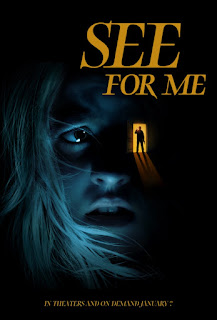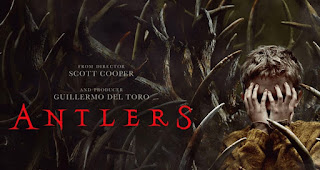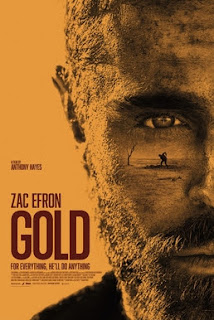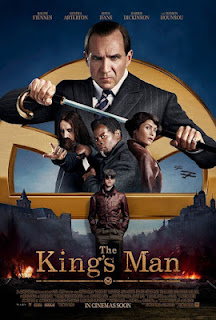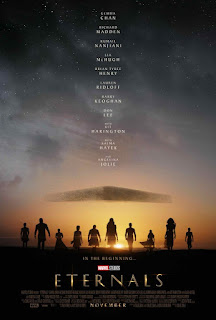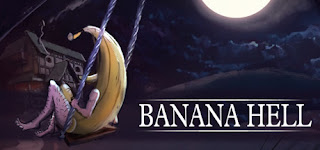Why did you decide to focus on plants for this series?
Michael: Well, one of the things that appeals to Sir David is doing something new, so with it being 25 years after Private Life Of Plants it did feel like it was about time! I also felt that people were starting to talk about plants, that there was a new zeitgeist coming back around [about plants]. But the key thing for us, to persuade David to do it, was going to be, how can we break new ground, visually and scientifically? What is the new technology we can bring to this series? What are the new stories?
Sir David: Yes, Private Life Of Plants exploited time-lapse, bringing plants to life by speeding up the action so that you could see them grow, blossoms open, and so on. But what could we do that was new?
In Private Life Of Plants we were stuck with all this very heavy, primitive equipment, but now we can take the cameras anywhere we like. So you now have the ability to go into a real forest, you can see a plant growing with its neighbours, fighting its neighbours or moving with its neighbours, or dying. And it's that that brings the thing to life, and which should make people say, "good lord, these extraordinary organisms are just like us" - in the sense that they live and die, that they fight, they have to learn to reproduce and all those sorts of things. But they do them so slowly, we've never seen it before. And that has a hypnotic appeal, in my view.
Michael: You can start to describe plant actions in the same sort of behavioural terms, with the fighting and deception, the sorts of things that we would normally attribute to animal behaviour. And so that also influenced how we approached the shooting of it. We wanted to reflect the approach we took in Planet Earth 2, where we got the cameras into the world of the animals and onto their shoulders while they were in the action. We would then allow the cameras to move around the environment, and as David was saying, capture the context and the relationships between the plants. And rather than just seeing it in one shot, you can see the world from various different plants' perspectives. It's a very dramatic, because this is a world we never see.
We're very plant blind because plants, to our own eyes, are very static, and they seem to do nothing. But when you use this technology, it's like parting a curtain to go into a parallel universe. And suddenly you see them [the plants] in the way they see their world. And that's when these sorts of perspectives really come to life.
Sir David: Plants fight one another, plants strangle one another. And you can actually see that happening [in real time]. That you can suddenly see a plant putting out a tentacle! Now you know it can't actually see, but you can see it trying to find its victim. And when it does finally touch the victim, it wraps around it quickly and strangles it. You know, it's pretty tough stuff.
How was it travelling the world for this series?
Sir David: In a sense, the series itself is slow growing, like plants. We started [filming] a long time ago, before Covid. And so I was dashing around interesting places, in California and so on, in a way that hasn't been possible for the last two years. So I appear in all these different parts of the world quite frequently, more than any other [series] for some time.
Michael: I think this series needed a guide. Somebody to take you on these journeys [in each episode] and allow you to go between our world and the plant world. And David acts as the kind of the translator between each world was a key reason for having him on location so much. But also there's nothing more fun than being on location and doing a little demonstration. So David would say, "watch this when this plant does this". It feels important and exciting, and makes it a lot more fun for the audience.
Did this feel like an important time to be making a new series about plants?
Sir David: Yes, the world has suddenly become plant conscious. There has been a revolution worldwide in attitudes towards the natural world in my lifetime. An awakening and an awareness of how important the natural world is to us all. An awareness that we would starve without plants, we wouldn't be able to breathe without plants. The world is green, it's an apt name [for the series]... and yet people's understanding about plants, except in a very kind of narrow way, has not kept up with that. I think this will bring it home.
The world depends on plants. It's a cliché now, every breath of air we take, and every mouthful of food we eat, depends upon plants. I also think that being shut up and confined to one's garden, if one is lucky enough to have a garden, and if not, to having plants sitting on a shelf, has changed people's perspective. And an awareness [has grown] of another world that exists to which we hardly ever pay attention to in its own right. Of course, we do gardening programmes and have done since the beginning of television. But this is not about gardening, this is about a parallel world, which exists alongside us, and which is the basis for our own lives, and for which we have paid scant attention over the years.
Michael: The plant world is an incredible life force. A walk in the woods, a walk in the park is actually salvation to the soul for so many people and the pandemic has accentuated that. People started to open their eyes to this world around us in a way that they haven't done before.
Anybody who takes a walk probably sees more plants than you see animals, so why do you think people have not been as engaged with plants as they been with animals?
Sir David: Because they apparently just sit there being a plant. You could either take them or leave them or you could dig them up, or throw them aside. They don't react, they don't resent it, they just die. We don't engage with plants enough.
Michael: Some of the discoveries we've revealed in the series do make you start to think about plants in a very different way. For example, that there's the 'microrhizal' network story that we've featured in one of our episodes that is truly out of science fiction. This idea [is] that all the trees in a forest are connected by fungal networks, so each of these trees are effectively communicating with each other. This is something that blows your mind, when you actually think about it. It's like going through the back of the wardrobe in The Lion, The Witch And The Wardrobe, into another world which you're suddenly seeing for the first time.
David, in your travels on the series you interacted with lots of plants. Are there any plants that really stuck in your mind?
Sir David: One of the really great, profoundly moving experiences, was to go to the giant sequoias in California, these enormous trees. It's not an accident that there's a cathedral-like feeling when you go amongst them. They are immense things, some of the tallest ones are enormous. But what this programme did was to use another of the inventions that you might think had very little to do with plants, technical inventions, that changed natural history photography in the past 10-20 years: drones. When you see the final sequence in the programmes and [the camera] suddenly rises above the tree tops. and you see these giants - it's a marvellous sequence.
Michael: It's the first time I've ever filmed there, and you cannot not be moved by them, they've been there for 3,000 years. You feel like they've been there since the beginning of time. You think nothing could ever go wrong in the world while these things are alive.
And you had a very scary encounter with a cactus didn't you?
Sir David: Yes, I mean, the cholla really is a physical danger. It has been very dense spines in rosettes, so they point in all directions. And if you just brush against it, the spines are like spicules of glass, I mean they are that sharp and they go into you and you really have trouble getting them out! So that is a really dangerous plant. The cholla is an active aggressor. I mean you feel you better stand back and you better watch out [for it].
Michael: One of the joys of going on location is thinking up horrible things to get David to do. So what we did, because it was so dangerous, was we got a Kevlar under-glove, and then on top of that a welding glove. So you can imagine that's about as good protection as you could possibly get. So David bravely put his hand inside this cholla cactus, as requested. And half way through it, these spikes still managed to get through those two bits of protection. And it's quite painful, isn't it?
Sir David: Yes it was!
Michael: What's more, the other thing that's so nasty and why all animals avoid it, is because not only does it puncture you, but it sort of acts like a trap. So if you put your hand into it you can't remove your fingers. And unfortunately you can find grisly signs of an animal that has got trapped by it!
In the water episode there's a big scene in the Pantanal (Brazil), how did you use time-lapse for this scene?
Sir David: Well, water lilies are extremely aggressive. And their battleground is the surface of the lake and the surface of the water, so it's a very narrow battle. The Giant Water Lily which produces leaves famously which can hold a small baby, has a bud that comes up loaded with prickles. And it comes up into the surface and starts expanding, with these spikes pushing everything else out of the way. And in the end the lake ends up as just solid Giant Water Lilies butting up against one another, with no room for anything else at all. It's one of the most empire building aggressive plants there is. Everybody says how wonderful it is, but nobody says how murderous it is.
And the final episode of the series is about the relationships between people and plants, can you tell us about that episode?
Michael: Yes, so that episode is about the relationship between humanity and plants. And that's both in terms of how we live alongside them, and also how our lives have followed a very tightly bound path with them since the start of the agricultural revolution.
The episode begins with some of the most successful plants in our world, what we rather disparagingly call weeds. Plants that are very good living alongside us. But occasionally the characteristics that make weed plants so successful can be used to mutual benefit. One of the stories we feature in the episode follows a particular group of people in India who live in very difficult environments, with very steep sided ravines of rocks, and torrents of rivers which are almost impossible to cross. So if you try to build a traditional bridge out of steel or concrete, they just get washed away. So this community use the incredible speed and strength and growth of a fig tree to train the roots to create these bridges. So over time, all these roots connect up and grow and grow and grow and produce these absolutely bombproof beautiful living bridges. And they'll live for hundreds of years, allowing the local people to cross these rivers. They become very symbolic for that particular community, so there's quite a spiritual connection.
What would you hope that the audience will take away from watching the series?
Sir David: That there is a parallel world on which we depend, and which up to now we have largely ignored, if I speak on behalf of urbanised man. Over half the population of the world according to the United Nations is urbanised, live in cities, only seeing cultivated plants and never seeing a wild community of plants. But that wild community is there, outside urban circumstances normally, and we depend upon it. And we better jolly well care for it.
Michael: One of the great joys of being a filmmaker is showing people things they've never seen before, and opening their eyes to things that could not see with their own eyes. And this does it in a way that perhaps no other series I've ever worked on has done, because you literally can't see these things other than on camera.
But I think also the importance and vulnerability of plants, they are unsung heroes. Particularly as we focus on the climate emergency, that plants are our greatest allies. They do such a lot of work for us, they are great carbon capturing machines. And what's great about them is they'll do it without us even having to try. Just leave them alone, and they'll do the job for us.
So there's various technologies being developed in this series, can you tell us about some of these?
Michael: One of the things that was absolutely critical for this series was to find some technology that allowed us to see from that particular plants perspective in a way that we hadn't been able to do before. And that involves time-lapse, because they live in this different time frame. And so that required a particular series of newly developed robotic cameras, which we were able to control in various ways.
So we used a combination of brilliant engineers, optical experts and computing whiz kids to come up with this technology. And it's all in one camera, called the Triffid. You can actually control this in various ways, including with a little game controller which I handed to David (laughs). And I thought to myself, he's never going to control it, but then a couple of minutes later he had it up, down, across and back up again. And then it did get a bit out of control and we had to get him to hand it back!
But that piece of technology allowed us to do something with a story that's never really been shown properly. And that's with leaf cutter ants and the partnership they have in the rainforest with plants. Leafcutter ants, which we see running around collecting leaves, effectively harvesting them, are being driven by a massive fungus which lives underground. And the ants are effectively the agents for that fungus, the fungus is the thing that feeds on the leaves. The fungus that digests the leaves gives the ants a reward of little tiny mini mushrooms.
So we wanted to show the scale of this by showing the whole route of the army of a leaf cutter ants trail From where it was collecting the leaves, all the way down into this chasm where this fungus was operating. So the triffid uses a tracking shot, that starts on the leaves and goes all the way along the trunks, down into the fungus. So that shot to your eyes is in real time, but in the shot all the ants are moving in time lapse. And that's one of the things that I think has been a breakthrough for this series, that the camera can move in our time. But within the shot, it's all moving in time lapse. And that is a quite an unusual perspective.


